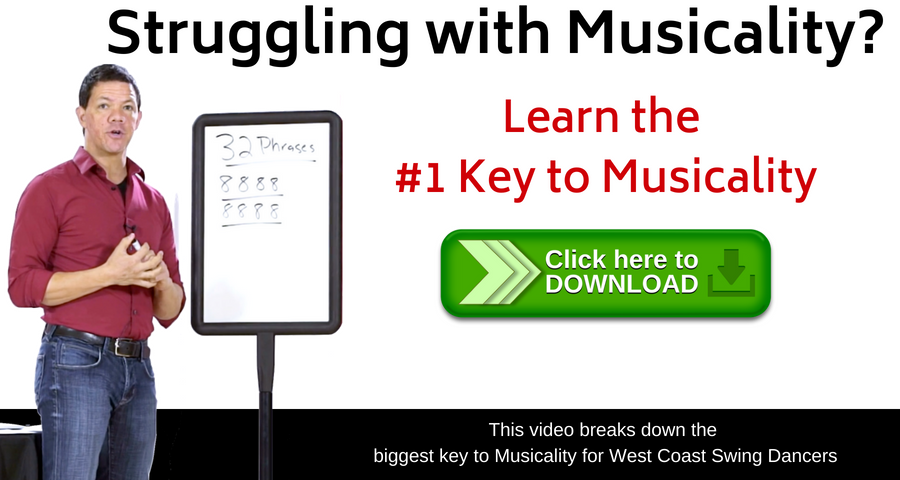Blues music is the grand-daddy of west coast swing. You’re almost guaranteed to hear blues music playing at a WCS night, and if you’re a competitive dancer then you can count on getting a blues song during your competitions. Although every song has its own quirks, the following list of skills will help you get started in dancing to blues music.
All of these suggestions are elements that you should think about incorporating into your dancing when the DJ is playing the blues. However, many of these elements are variations, syncopations, or styling choices. Especially in competitions, don’t let these variations entirely replace your basics. You should still show off the WCS fundamentals throughout your dancing; use these elements to add a blues flavor to the dance. Remember the caveats from the introduction post!
- Learn to dance rolling count. Blues music is much more likely to have a rolling count than other WCS genres. Although not all blues artists use the rolling count, being able to dance rolling count is a key to successfully dancing to many classic blues songs as well as music by new blues artists such as Keb’ Mo’. Learn more about rolling count.
- Use hitch ball-change rhythms in your patterns. Kick ball-change, hold ball-change, etc. all emphasize the pulse on the upbeats and the swung rhythm. Add this rhythm pattern into your doubles in order to bring out those elements of the music. You can learn hitch ball changes in on our video page.
- Listen for 48-beat phrases. Like the rolling count, lots of blues songs are written in 48-beat phrases rather than 32-beat phrases. By listening for the blues chord progressions, you can find the accents more easily. Detailed description of phrasing can be found in our “Ultimate Guide to Musicality”
- Use footwork. In WCS, blues music is danced primarily in the feet. Become comfortable with footwork variations in order to create energy during the dance. Shag dancers can provide great inspiration for how to use footwork to bring out the excitement of blues music.
- End patterns with double resistance. The double resistance anchor emphasizes the upbeat nicely, and it also easily blends into a hold ball-change at the beginning of the next pattern.
- Dance into your knees. Especially with “dirty” blues music (think about a smoky lounge with spilled beer dried on the worn wood floor), dancing low can bring out the groovy sound of the blues.
- Hit accents inside of moves rather than with all-out breaks. Most blues music doesn’t just stop for a break, so find ways to accent the hits within your patterns. Learn our “practice pattern set” for musicality. It’s in the paid membership section.
How to practice these
Put on some blues music and try incorporating some of these elements into your dancing. Remember that these elements shouldn’t replace your WCS fundamentals!
Jump to the next style of music:
Return to: West Coast Swing Musicality – 4 Styles of Music





 Brian & Megan
Brian & Megan